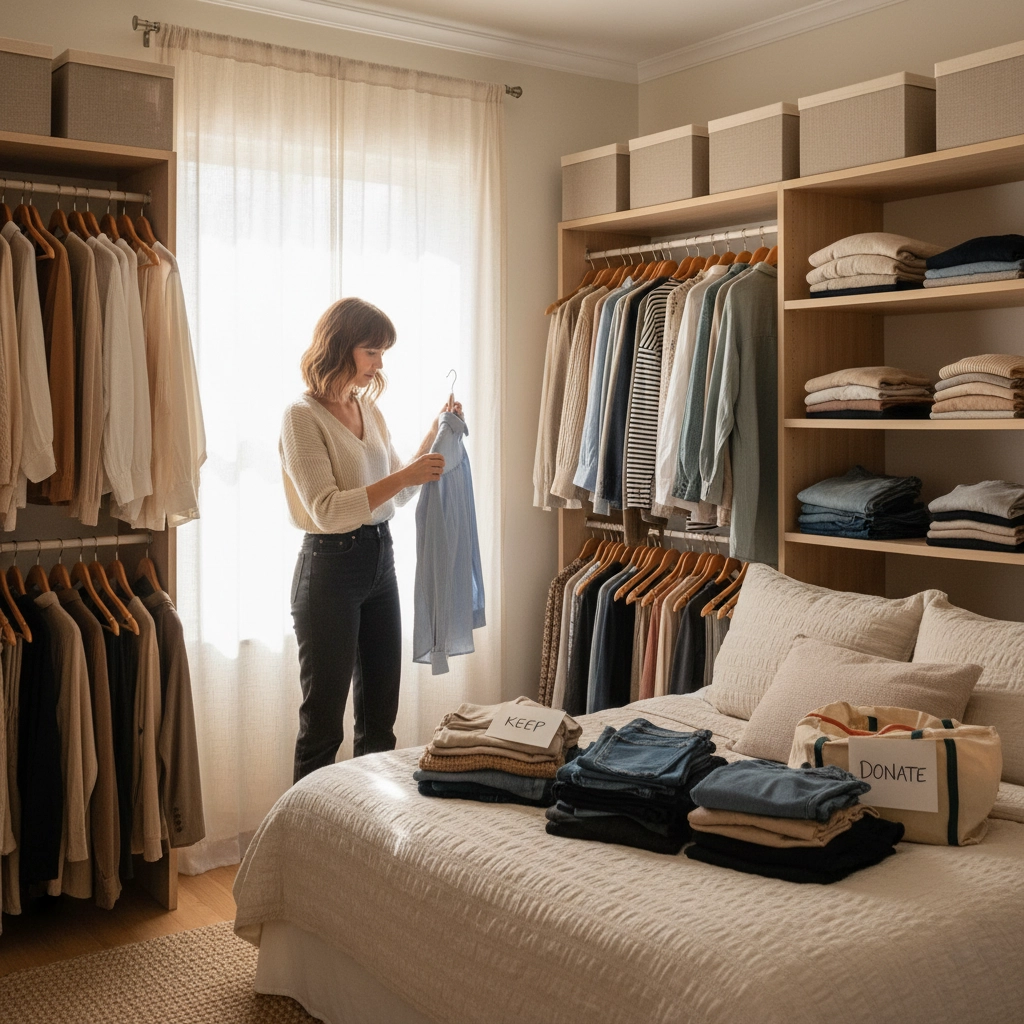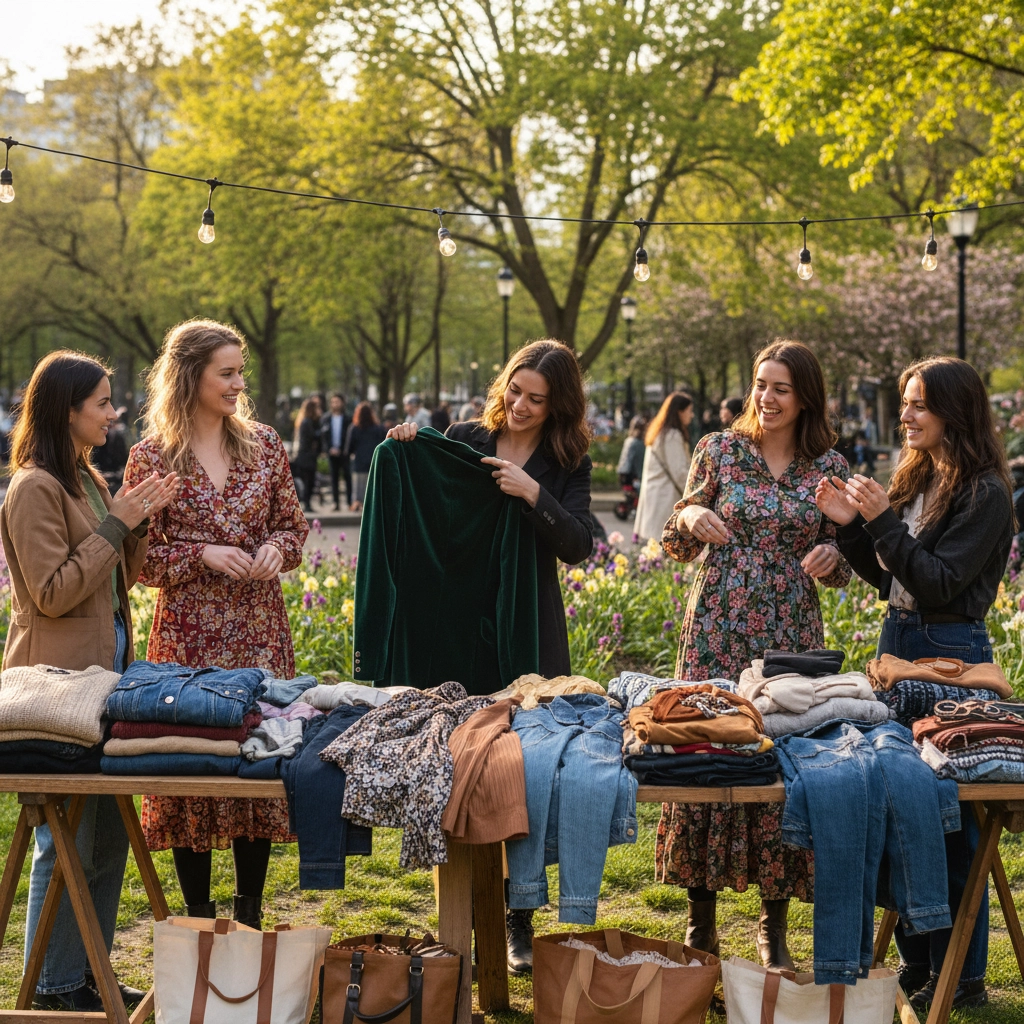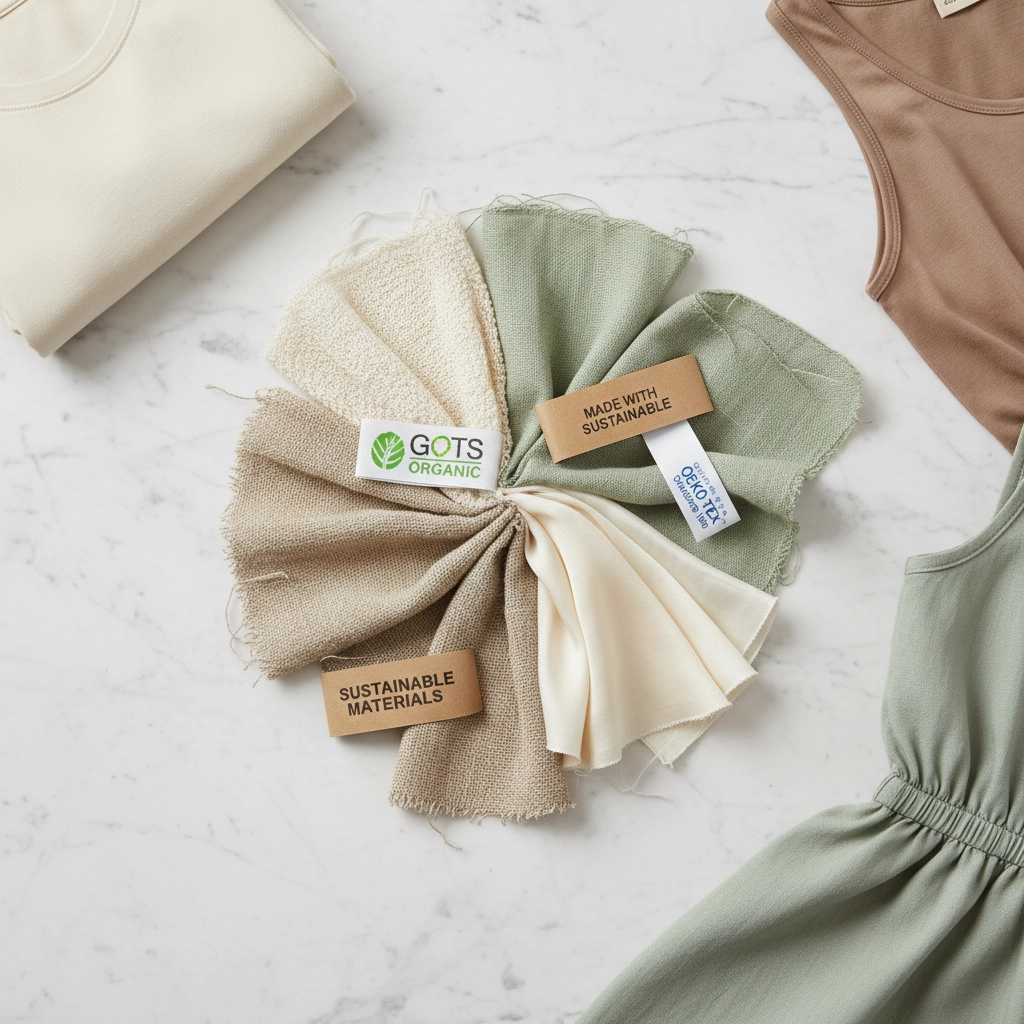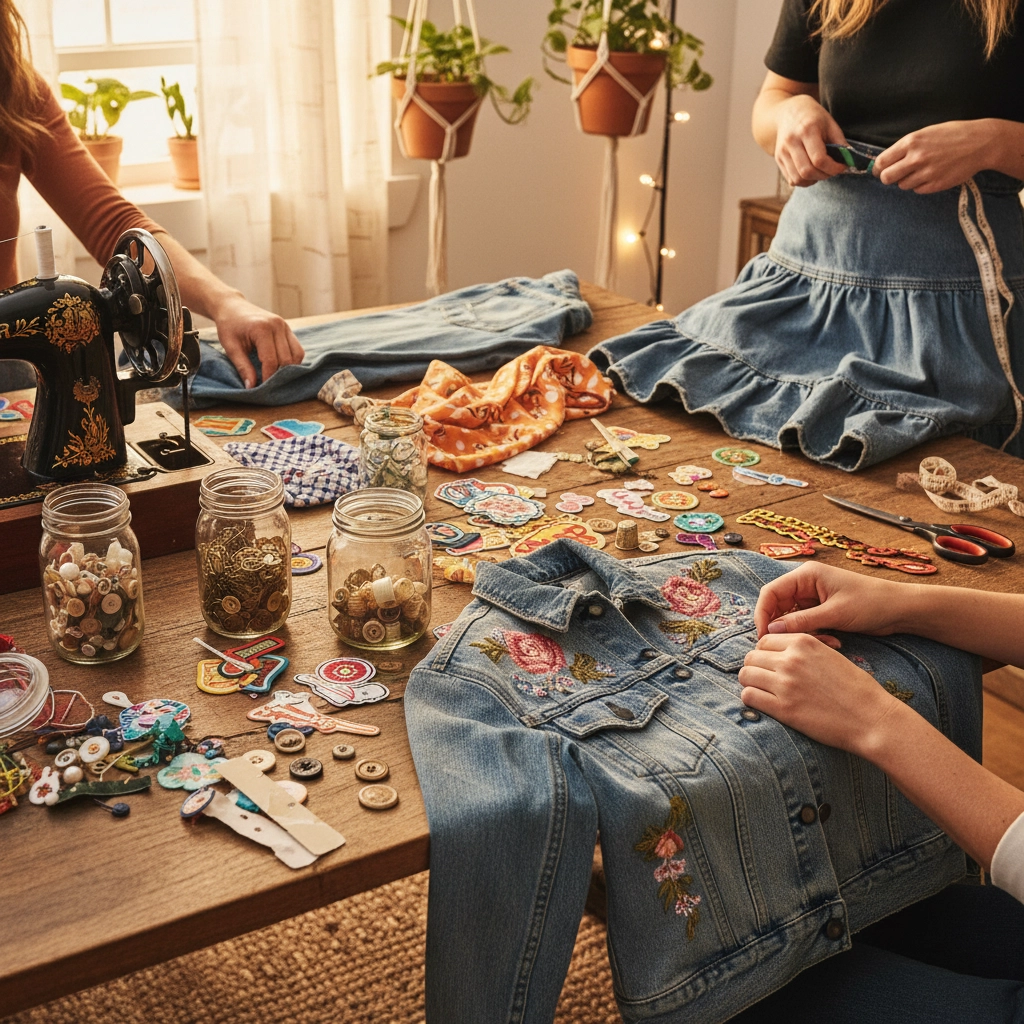Building a sustainable wardrobe doesn't have to drain your bank account or compromise your style. With fast fashion dominating the industry, it's more important than ever to make conscious choices about what we wear. The good news? Creating an eco-friendly closet that reflects your values while staying budget-friendly is totally achievable with the right strategies.
Whether you're just starting your sustainability journey or looking to make your current wardrobe more planet-friendly, these five steps will help you build a closet you'll love without the guilt or the hefty price tag.
Step 1: Start With What You Already Have
The most sustainable piece of clothing is the one already hanging in your closet. Before you even think about shopping, it's time for a wardrobe audit. Studies show that the number of times a garment is worn has declined by 36% in the past 15 years, which means most of us have perfectly good clothes we've completely forgotten about.
Set aside a weekend afternoon and go through every single item in your closet. Try everything on and ask yourself these honest questions: Have I worn this in the past year? Does it fit well? Do I feel confident when I wear it? Can I style this piece at least three different ways?
Keep the pieces that make you feel amazing and work with your lifestyle. For items that no longer serve you, don't just toss them in the trash. Consider selling them online, donating to local charities, or giving them to friends who might love them. This process not only clears valuable space but helps you understand your personal style preferences and identify any real gaps in your wardrobe.

Once you've curated your existing collection, focus on taking better care of what you have. Follow care instructions on labels, use gentle, eco-friendly detergents, air-dry when possible, and store items properly to prevent wrinkles and damage. Proper care can literally double the lifespan of your clothes, making this the most cost-effective sustainability strategy there is.
Step 2: Embrace Secondhand Shopping and Clothing Swaps
Thrifting has never been more popular, and honestly, it's one of the most fun ways to shop sustainably. Secondhand stores, consignment shops, and online platforms like Poshmark or Vinted offer incredible finds at fraction-of-retail prices. Someone else's pre-loved piece might become your new signature item.
When you're tempted by a specific trend you see on social media, check thrift stores first before buying new. You'll often find similar styles for much less money, plus you get the satisfaction of giving clothing a second life instead of contributing to overproduction.
Clothing swap events are gaining popularity in communities everywhere, and they're absolutely genius for refreshing your wardrobe on a zero-dollar budget. These events let you bring clothes you no longer want and trade them for other people's unwanted items. It's like shopping, but free! Check Facebook groups or community centers in your area for upcoming swaps, or organize one with your friend group.
For special occasions that require specific outfits – think weddings, galas, or job interviews – consider renting instead of buying. Rental platforms let you wear high-quality, designer pieces for a fraction of retail price, eliminating the need to purchase formal wear you'll only wear once.
Step 3: Invest in Quality Basics Made With Sustainable Materials
When you do need to purchase new items, focus on timeless staples made to last. Think of these purchases as investments rather than expenses. Essential pieces include a well-cut organic cotton t-shirt, a cozy neutral sweater, versatile trousers that work for multiple occasions, and a layering piece that transitions through seasons.

Material choice is crucial when building a sustainable wardrobe. Look for clothing made with organic cotton, hemp, linen, or other natural fibers. These materials are gentler on the planet because they require fewer pesticides and less water to produce, plus they're better for your skin. Items made from 100% natural materials like ethically sourced wool, organic cotton, silk, and Tencel are more sustainable long-term because they break down naturally and are easier to recycle than synthetic blends.
Always read labels carefully and look for trusted certifications like GOTS (Global Organic Textile Standard) or OEKO-TEX to ensure your clothes are genuinely planet-friendly. Avoid polyester and synthetic blends when possible, as these materials shed microplastics during washing and are much harder to recycle.
Consider pieces like our bamboo twist front top which offers sustainable bamboo fabric with versatile styling options, or classic pieces that can be dressed up or down depending on the occasion.
Step 4: Get Creative With Repairs and Upcycling
Learning basic mending and modification skills is an affordable way to extend your clothes' lifespan while expressing your creativity. In our throwaway culture, making garments last for years counters the disposability that fast fashion promotes.
When clothes get small tears, lose buttons, or come unstitched, repair them instead of discarding them. YouTube is full of tutorials for basic sewing techniques, and many local community centers offer basic tailoring classes. These skills will save you money for life.

Embrace upcycling by customizing thrift store finds to fit better or transforming old clothes into something completely new. Add patches or embroidery to give personality to plain pieces, transform old jeans into a skirt, or modify oversized finds to better suit your body shape. This creative approach results in unique pieces that reflect your personal style while significantly extending the life of garments that might otherwise end up in landfills.
Consider organizing craft nights with friends where everyone brings pieces they want to modify. You'll learn from each other while having fun, and everyone goes home with refreshed wardrobe items.
Step 5: Practice Mindful and Strategic Consumption
The final step is adopting a mindset shift from impulse buying to mindful consumption. Instead of following every fashion trend that crosses your social media feed, focus on building a wardrobe that truly reflects your lifestyle and personal style.
Before making any purchase, ask yourself these key questions: Will I wear this at least 30 times? Does it work with at least three items I already own? Is it made from quality materials that will last? Does it fit my actual lifestyle, not the lifestyle I imagine I might have someday?

Consider building a capsule wardrobe filled with versatile, high-quality pieces you genuinely love. This approach lets you create your own signature style that isn't dependent on ever-changing fashion trends. When you do need to add new pieces, shop with a specific list of wardrobe gaps rather than browsing aimlessly.
Don't forget about borrowing! Before purchasing something for a one-time event, ask friends if they have something similar you could borrow. This strategy saves money and reduces demand for new production while strengthening your community connections.
Making It Work for Your Budget
Building a sustainable wardrobe is a marathon, not a sprint. Start with one step that feels most manageable for your current situation and budget. Maybe that's organizing a clothing swap with friends, or maybe it's committing to repairing instead of replacing the next item that needs attention.
Remember, the goal isn't perfection – it's progress. Every conscious choice you make contributes to a more sustainable fashion industry and a wardrobe that truly reflects your values. By following these five steps, you'll create a closet filled with pieces you love, reduce your environmental impact, and save money in the long run.
The most stylish thing about sustainable fashion? Knowing that your choices are making a positive difference for the planet while keeping you looking and feeling amazing.


